This month features photographs from a book donated to the Society by Pamela Murray (nee Low). The photographs are late 19th and early 20th century but as they are not dated, we cannot be sure.
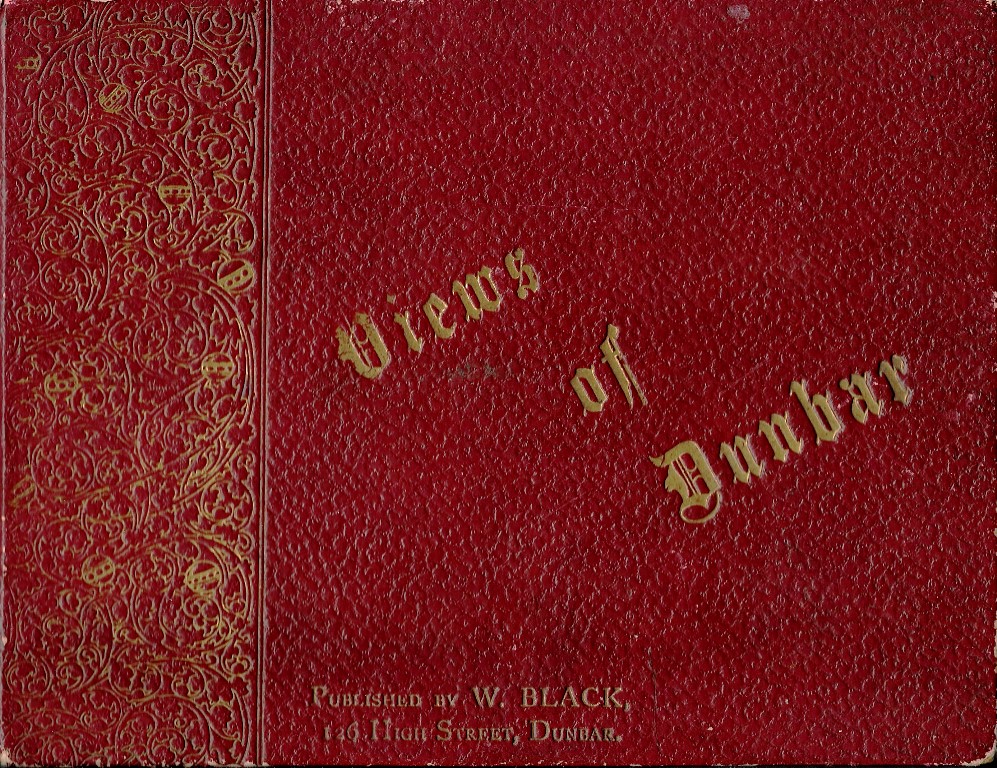
This is the cover of the book which is A5 in size. W Black was a draper’s shop in the High Street at no 126 – the site of the present John Muir’s Birthplace. W Black also had a warehouse in the High Street and publications were part of the business. There are no details inside the book as to the date of the book or where it was printed. It is thought that the photographs may be based on postcards of Dunbar.
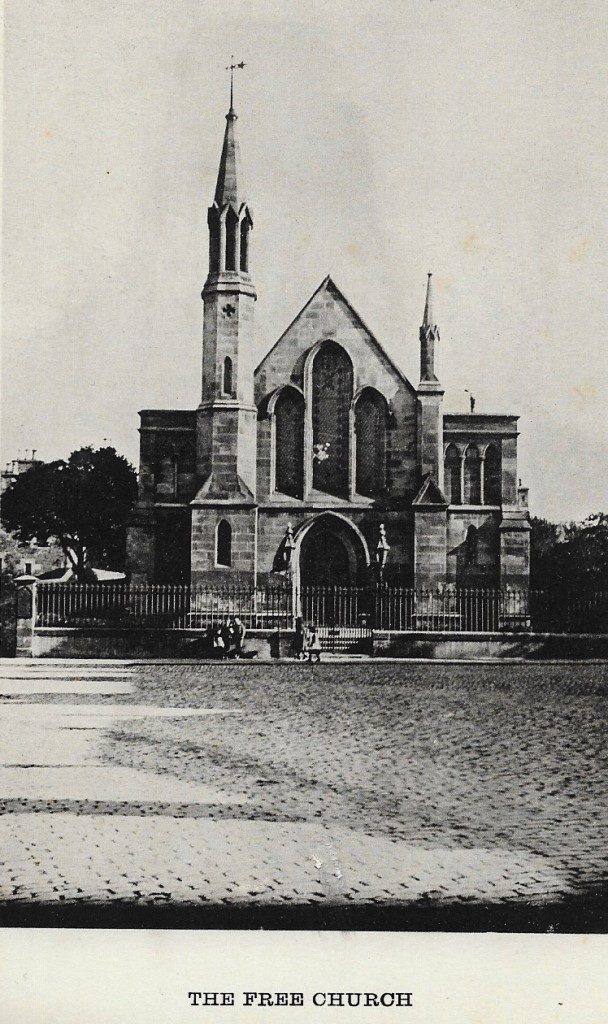
As you can see at the bottom of the photograph, the church is named as The Free Church and not the Abbey Church as it is better known. According to this source, “This church was built at the south end of High Street near to the Old Bowling Green and the site of Maison Dieu”. The Maison Dieu” (House of God) itself “.. has a long history with ecclesiastical buildings. A monastery was located here, apparently ending in the 16th century” – see here for more information. Thus the name Abbey Church would come from the fact that the monastery was there previously. The church joined the Free Church movement in 1917 and remained part of the United Free Church organisation until it later aligned itself to the Parish Church. The building still stands but is unused at the moment. In the photo, you can see that there is no tar road – only cobbles. Also, the modern day gardens are not yet built.
This superb photo of Lochend Woods in the snow looks as if it is taken on the path through the woods across the road from the present Hallhill rugby pitch and running track. You can see that the wall is completely intact – unlike today. It’s a clever photo with one photographer looking back on another. The photographer standing on the path is very well dressed and has a box camera on a tripod. Opposite the wall, there appears to be a well maintained hedge, which no longer exists.
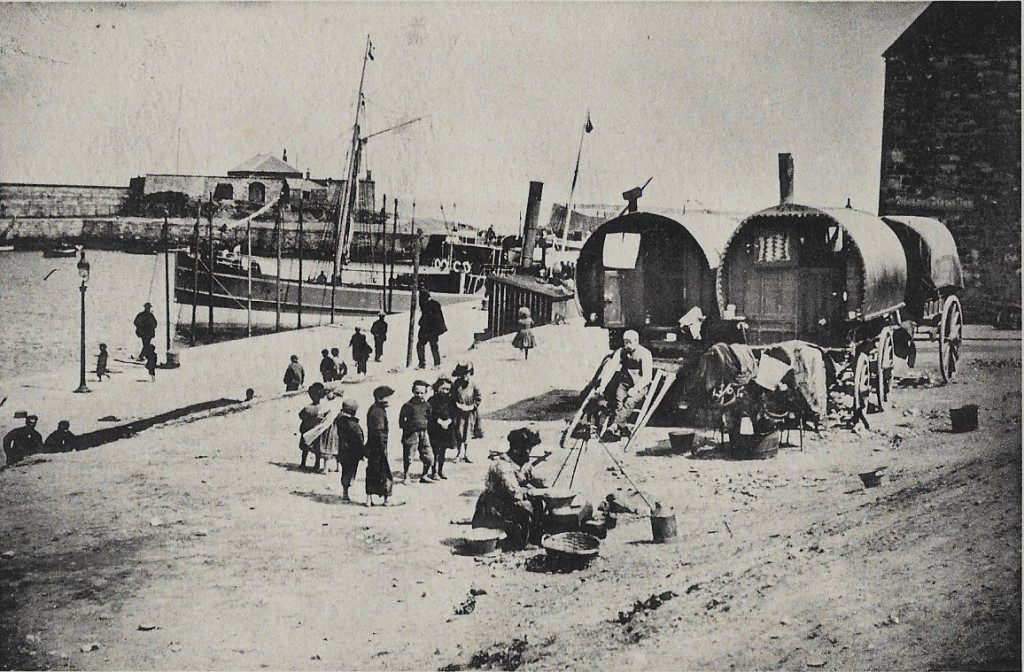
In the book of photographs, this one is entitled THE NEW HARBOUR and is probably taken in the 1890s or early 1900s, when the Victoria Harbour was still regarded as being relatively new. It is a fascinating scene, with the two travellers’ caravans or vardos – see here for more on these vehicles. The woman sitting in front of the caravans appears to be cooking – or washing? The children to the woman’s left may well be locals who are looking in fascination at the outdoor domestic scene. All the children have bare feet, apart from the girl at the end with the dress and hat, who has shoes on. Behind this scene, in the harbour, there is a steam driven boat with a funnel – called a “pipe stalkie”. This is not a fishing boat but one involved in trading goods e.g. tatties, up and down the coast. There are no letters or numbers on the boat as a fishing boat would have had. At the far end of the harbour, you can see what is the present Dunbar Battery (good photos). The buildings you can see at The Battery were parts of the isolation hospital and you can read more about the hospital here. Finally, on the wall behind the caravan on the right, there is some lettering and this is most likely to read – in part at least – Masons Arms. At one time, there were 4 Masons Arms here in Dunbar – see for more information. Thanks to Will Collin and Gordon Easingwood for some of the information here.
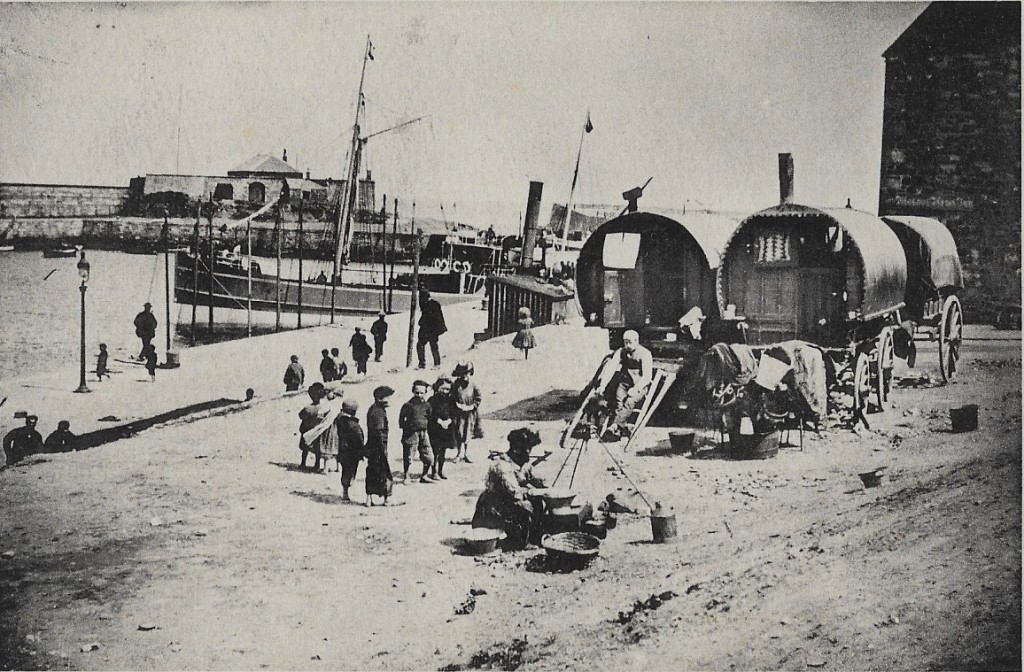
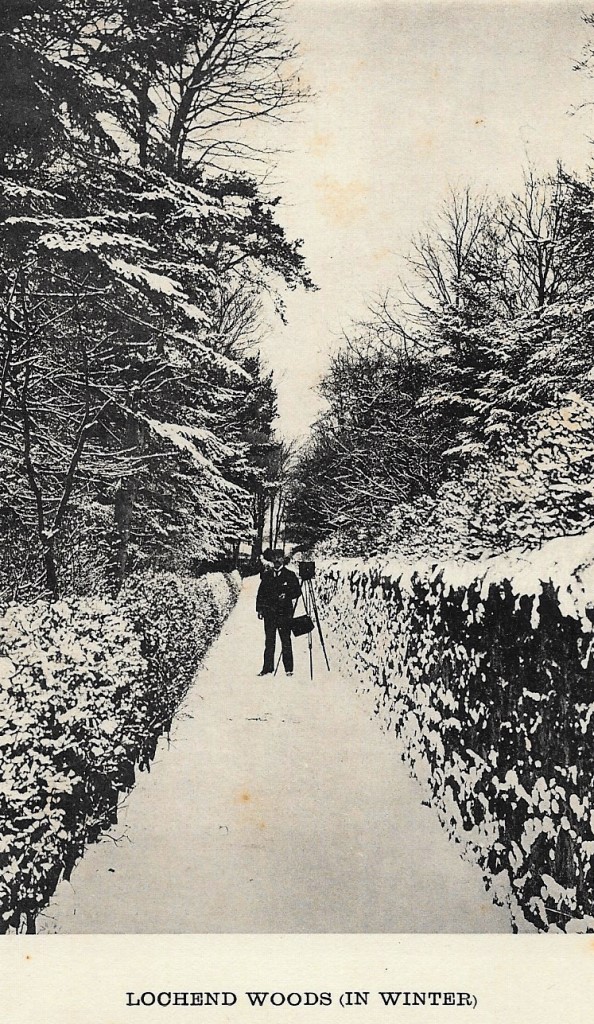
You must be logged in to post a comment.